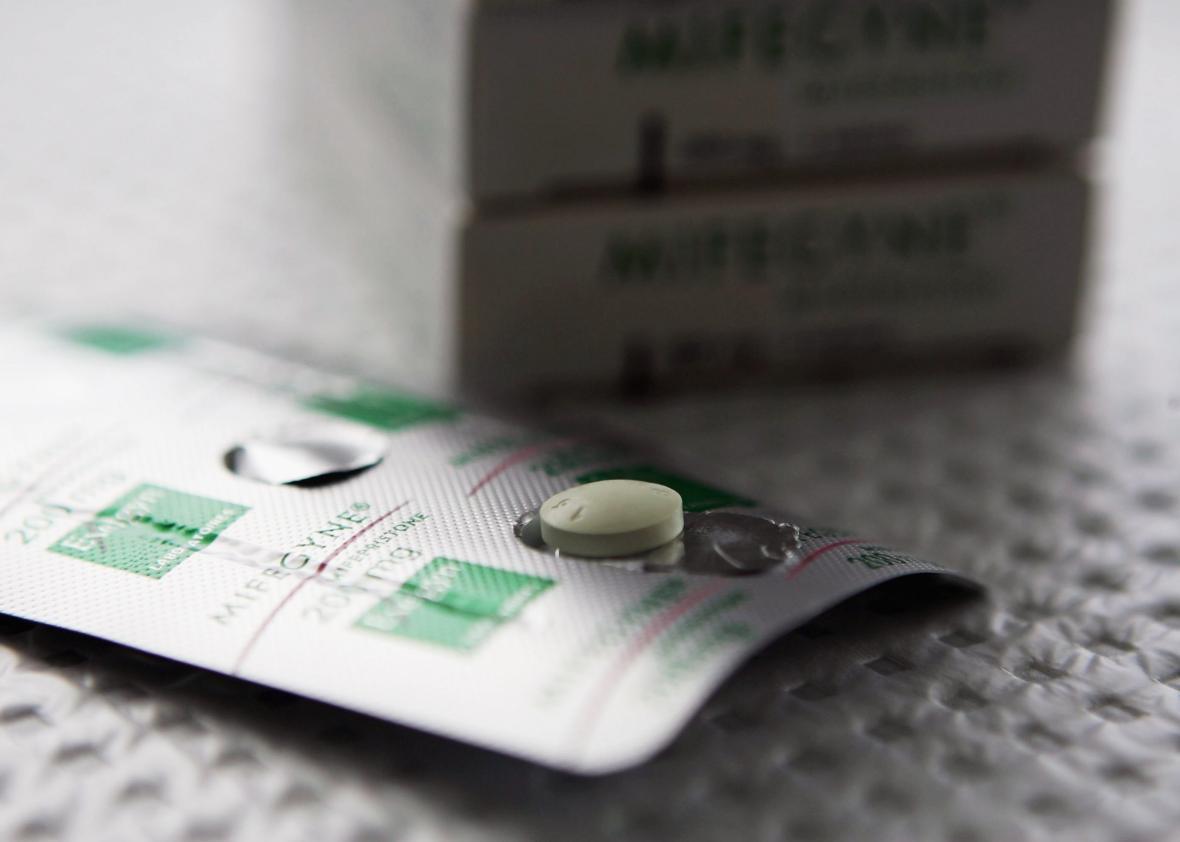Women in the U.S. are now having medical abortions nearly as often as surgical ones, according to new data analysis from Reuters. The two drugs that doctors can prescribe together for first-trimester abortions have gained popularity in recent years, and new guidelines issued by the Food and Drug Administration have made medication abortions accessible for more women who need them.
In clinics operated by Planned Parenthood, the country’s largest abortion-care provider, 43 percent of abortions provided in 2014 were administered through medication, compared to 35 percent in 2010, Reuters reports. Some states have already seen medical abortions surpass surgical ones: 64 percent of abortions in Iowa and 55 percent of those in Michigan are medical.
The proportion of medication abortions in the U.S. is probably larger now that it was even a few months ago. This March, the FDA shifted prescription guidelines for mifepristone and misoprostol (the pair of drugs that end pregnancies by blocking hormones and cause uterine contractions, respectively) to better align with the ways doctors had been prescribing the drugs for years. Previous guidelines had approved administration of these drugs through the seventh week of pregnancy and required a woman to visit her doctor three times—once for each drug, and once for a post-abortion checkup. Many doctors had already found mifepristone to be just as effective later in the first trimester, with fewer visits, and in smaller doses, but some states required doctors to stick to on-label prescriptions in an effort to curb access to abortion.
Since March, the FDA has greenlighted mifepristone prescriptions through the 10th week of pregnancy in a much smaller dose that causes fewer side effects. Medical professionals other than doctors, like nurse practitioners, can now administer the pills, alleviating some scheduling strain on clinics with few physicians on staff. The guidelines also allow women to take the misoprostol at home, making medical abortions easier to access for people who don’t have the time or resources to visit an abortion clinic three times in two weeks.
Reuters reports that in Ohio, Texas, and North Dakota, where doctors are prohibited by law from prescribing abortion drugs in any way outside of the FDA’s explicit guidelines, demand for medical abortions has tripled in some clinics since the agency expanded the parameters of its recommendations. This is an encouraging step toward a climate of abortion care that puts intimate health care decisions in the hands of women and their doctors, not politicians. One abortion provider told Reuters that many women prefer medication abortions because they can terminate their pregnancies at home with what resembles a heavy period, like an early miscarriage. By limiting medical abortions to FDA guidelines, anti-abortion advocates in Ohio, Texas, and North Dakota prevented some women from doing just that, forcing them into surgical abortions against their wishes when they could have safely taken pills instead. In Ohio, the law requiring doctors to prescribe mifepristone along strict FDA guidelines actually made medication abortion less safe.
Medication abortion represents a ripe opportunity for improved abortion access in places with few clinical options. Since there’s no special training required, any qualified medical practitioner can prescribe the drugs. (Still, many have refused to do so to avoid public protest, making abortion clinics the primary providers.) It’s legal in many states for a prescribing physician to authorize abortion pills by video conference while another health care provider examines the woman in person, a practice that has boosted the proportion of medication abortions in Iowa. Women who’ve been screened by medical professionals can even get abortion pills by mail in Hawaii, New York, Oregon, and Washington. As states continue to battle targeted laws passed to shutter abortion clinics, improved access to these drugs may offer an alternate route.
